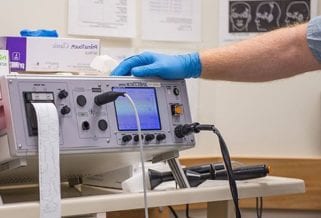IBCCES is the global leader in training and certification for healthcare professionals, educators and corporate partners who work with individuals with autism and other cognitive disorders. Our reach extends to more than 2 million people in all 50 states and over 70 countries around the globe. IBCCES Member Learning Community is provided as a free service to all IBCCES members who have completed one or more of our training and certification programs.
Is Electroconvulsive (ECT) Therapy Safe?
 This post was originally published on this site
This post was originally published on this siteWhat is electroconvulsive therapy?

In electroshock therapy, doctors use this machine to run a precise amount of electrical current through a patient’s brain, inducing seizures that inexplicably improve some severe mental health conditions.
Electroconvulsive therapy (ECT) is a treatment in which medical professionals apply an electric current to a patient’s brain for a short period to induce a seizure. Patients with certain mental illnesses may benefit from this procedure when medications and psychiatric counselling have failed to help. ECT can be applied to just one hemisphere of the brain or across the whole brain. A typical course of ECT requires three sessions a week for a total of two to four weeks.
What is the history of ECT?
European researchers in the 1930s noticed people with mental illness who also suffered epilepsy had reduced mental symptoms after a seizure. This gave birth to convulsive therapy, which was done using a chemical to induce seizure. This caused violent seizures resulting in spinal fractures, however.
In the late 1930s, doctors used electricity for the first time to induce a seizure as a treatment in patient with schizophrenia. It was originally called electroshock therapy and performed without anesthesia or muscle relaxants. Like the chemically induced seizures, early electroshock therapy caused uncontrolled convulsions leading to fractures and other injuries in the patients.
Since the late 1950s, doctors started using general anesthesia for ECT, which minimized the risks greatly. Stories of injuries and complications associated with this therapy led to protests against it in the 1960s and 70s.
Is electroconvulsive therapy safe?
Doctors worldwide perform ECT under general anesthesia with minimal side effects. Today, it is deemed the most effective and safest treatment for patients with severe mental disorders once considered untreatable.
Can you get brain damage from ECT?
There is no evidence for modern day ECT causing brain damage in any patient. It does not alter a person’s personality and is not used as treatment for personality disorders. It is the optimal treatment today for people with certain mental illnesses otherwise untreatable.
How is ECT performed?
The actual ECT procedure takes only about 5 to 10 minutes. It can be done while being hospitalized or as an outpatient. The doctor takes the following steps to prepare:
- Psychiatric evaluation of the patient.
- Medical checkup, including blood tests and ECG.
- Instruction to avoid food and drink except water for 8 hours prior as pre-anesthesia preparation.
During the procedure
- The anesthetist inserts an IV line and injects a short-acting anesthetic and muscle relaxant.
- Once the patient is unconscious, the doctor applies electrodes to specific positions on the scalp.
- The doctor then stimulates the brain with finely controlled electric impulses to produce a seizure lasting for approximately a minute.
- Because the patient’s muscles are relaxed, the seizure activity is only in the brain, except for slight movements in the hands and feet.
- The doctor monitors the seizure activity which is recorded on an EEG (electroencephalogram).
- Within minutes after the ECT the anesthetic effects start to wear off and the patient is monitored during the recovery period.
QUESTION
Who benefits from ECT?
ECT is a beneficial psychiatric treatment in the following situations:
What are the risks and side effects of ECT?
In general ECT is safe, though it does have a few risks and side effects. Almost all of these side effects resolve on their own in a short period.
- The side effects of general anesthesia like headache, nausea, vomiting, irregular heart rate, etc.
- Confusion that may last for a few hours, more likely in elderly patients.
- Memory loss known as retrograde amnesia when a patient forgets events that occurred weeks or months before the treatment.
- Memory loss known as anterograde amnesia, when a person is unable to recall events of the recent past from around the time of treatment.
- The side effects of anesthesia resolve within hours. The memory loss and confusion resolve on their own in a couple of months at most. Some patients may experience more permanent memory loss or gaps in their memory.
Is ECT effective?
It is not fully clear how ECT works, but experts believe that the seizure somehow restores the chemical balance of the brain. ECT is most effective in people who undergo the full course of multiple treatments. Depression may still return, and the patient might need further treatments with ECT or psychotherapy.
Latest Depression News
Daily Health News
Trending on MedicineNet
Medically Reviewed on 3/6/2020
References
Medscape Reference
